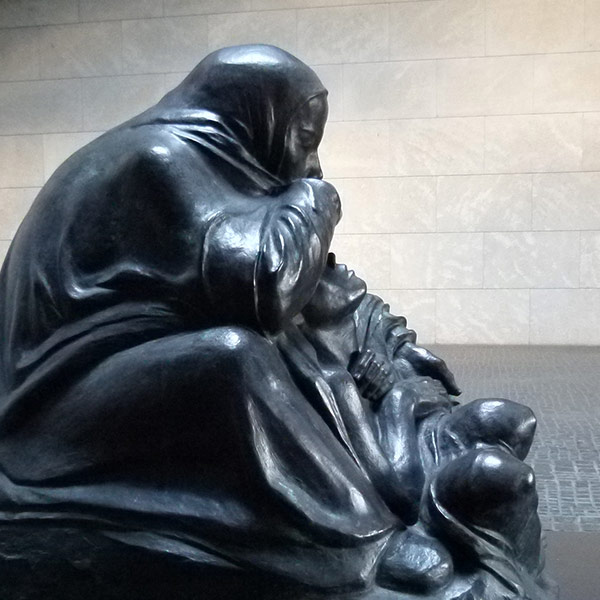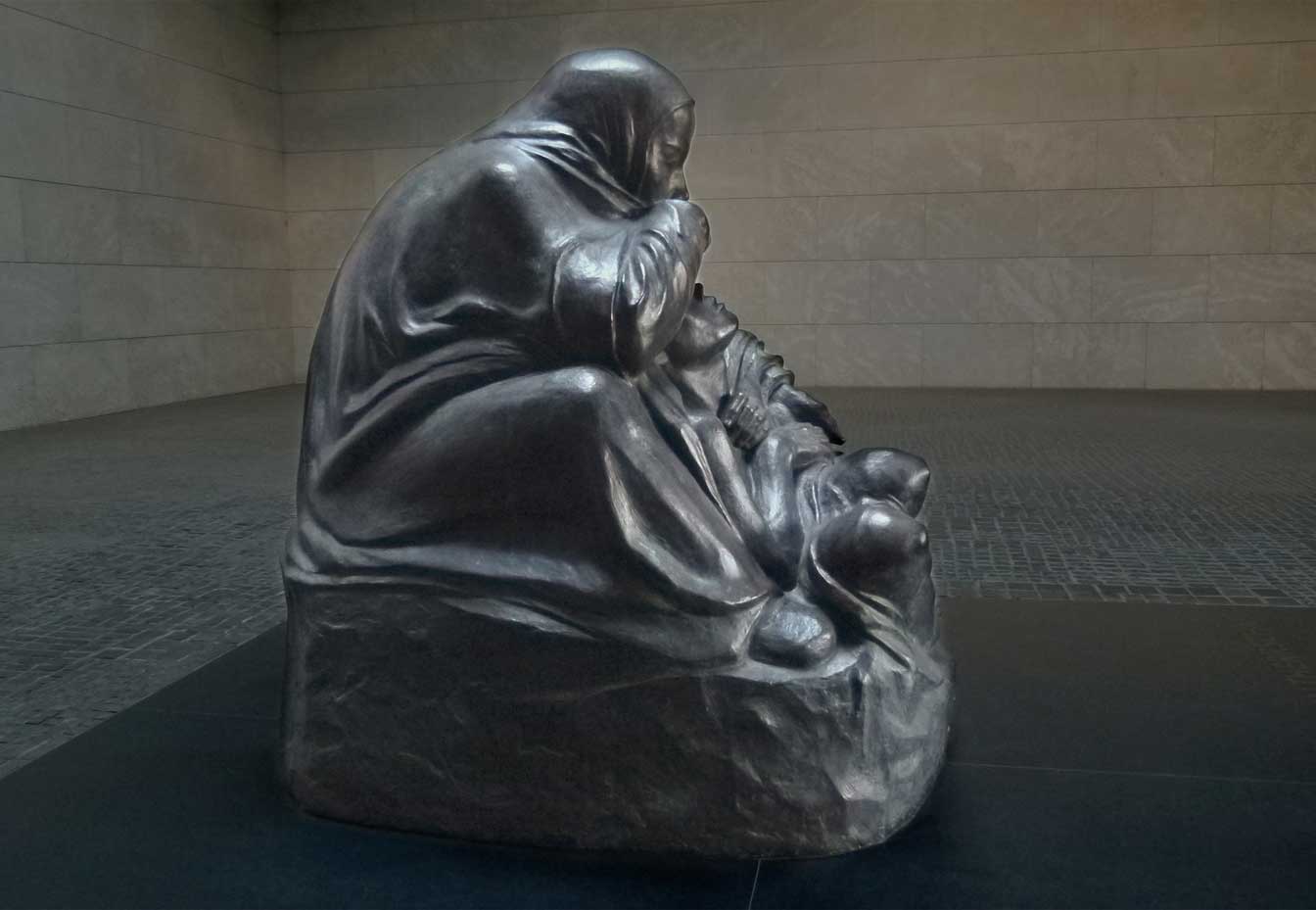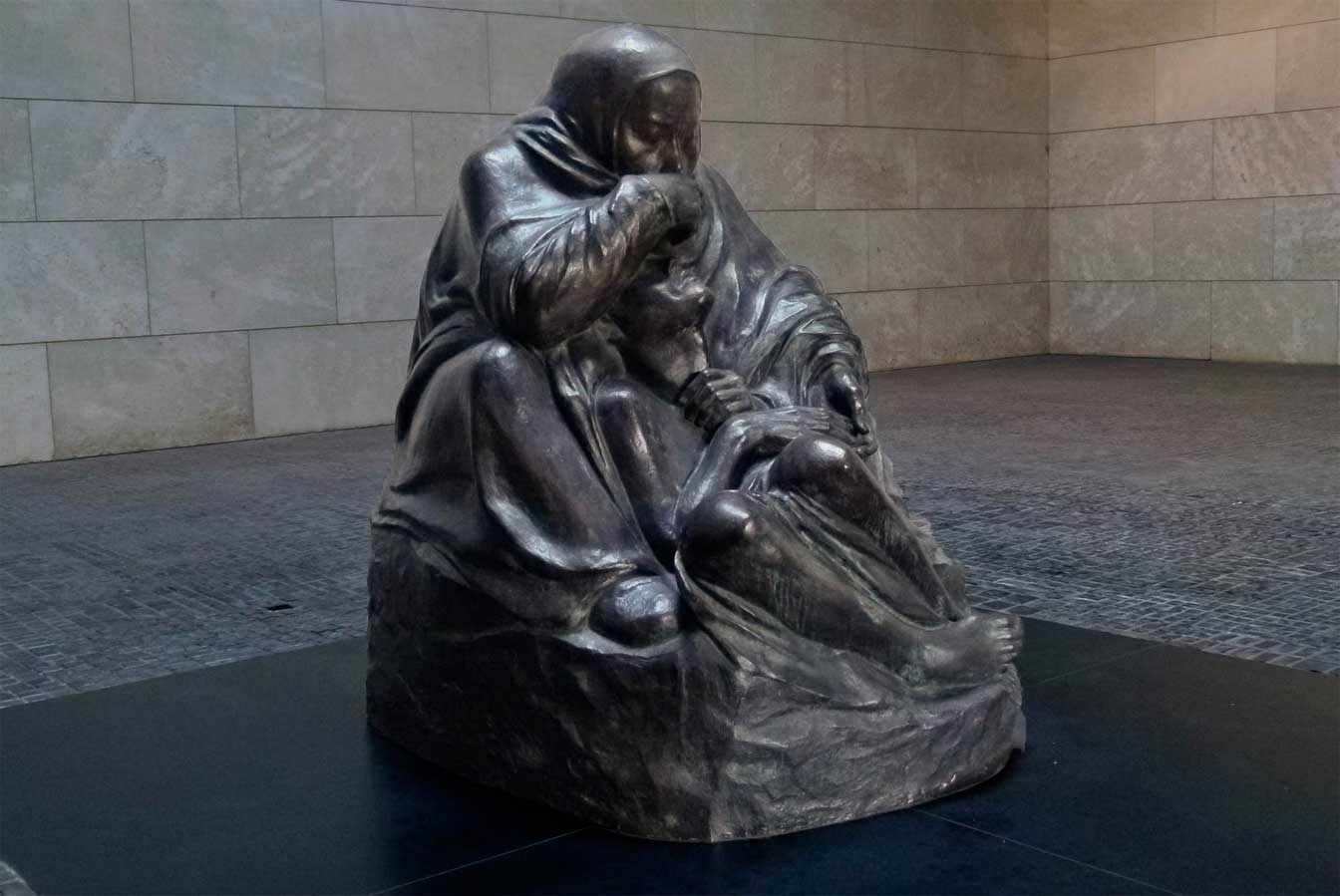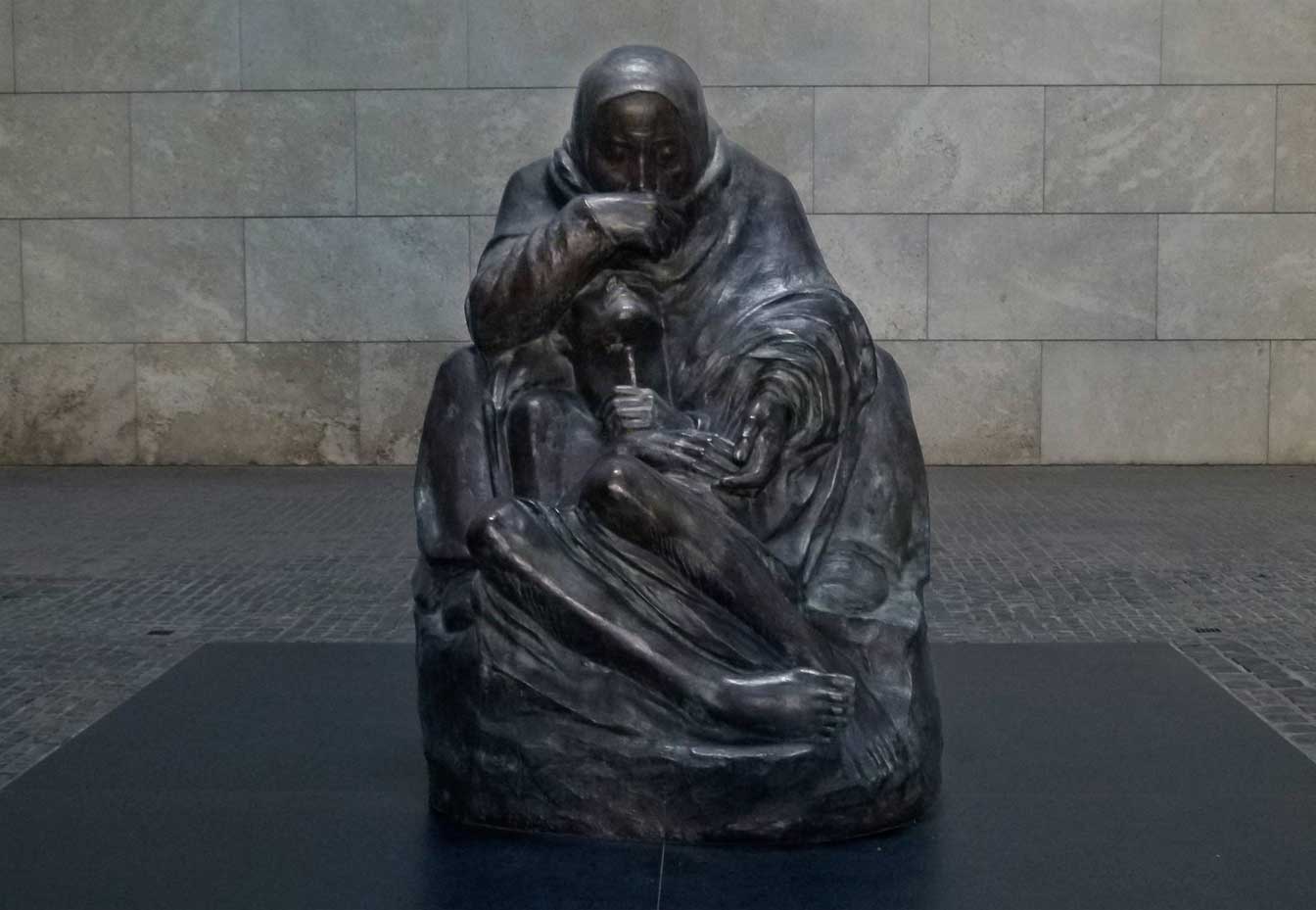Subtotal: $
Checkout-

We Are Not Bystanders
-

Alarmed by Jesus
-

Poem: I Cannot Love What You Are
-

Love in a Leper Colony
-

Insights on the Sermon on the Mount
-

The Hard Work of the Gospel
-

The Martyrs of Alcatraz
-

Becoming a People
-

The Dragon and the Coffee Pot
-

Was Bonhoeffer Willing to Kill?
-

Poem: For One Bereaved
-

Digging Deeper: Issue 1
-

Editors’ Picks Issue 1
-

Katharina Hutter
-

Pete Seeger
-

Family and Friends Issue 1
-

The Best of Classic Children’s Bibles
-

Purity in a Porn Age
-

Fighting Drought with Trees
-

The Jesus of the Four Gospels
-

Eberhard Arnold’s Unsettling Message

“I have no right to withdraw from the responsibility of being an advocate. It is my duty to voice the sufferings of people, the sufferings that never end and are as big as mountains.” So wrote Käthe Kollwitz – artist, socialist, pacifist, and grieving mother – five years after her son Peter died on the battlefield in World War I. In 1937, she began working on her Pietà in his memory as war loomed again. In that second great bloodletting she would lose her grandson, also named Peter, killed in action as a draftee for Hitler, whose regime was hounding Kollwitz for her dissident activities.
In 1993, an enlarged casting of the Pietà was installed as the centerpiece of Germany’s National Memorial to the Victims of War and Tyranny on Berlin’s Unter den Linden boulevard. The sculpture is situated in the Neue Wache guardhouse, once a nationalistic shrine that played a central role in the Nazis’ annual parade for war heroes.
Today, the remains of an unknown soldier and an unknown concentration camp prisoner rest beneath Kollwitz’s statue. Directly overhead, the oculus allows sunlight, rain, and snow to fall onto the agonized mother. “Blessed are those who mourn” – this place draws us into the heart of this cryptic beatitude, evoking the suffering of mothers all over the world, from Syria to the Congo.
Berlin photographer Walter Mason writes: “Kollwitz’s statue, alone in the middle of the room, commands a respect that is immediately understood by anyone who enters. The tourists come in off the street and, without exception, fall silent. The mother with her son is so wrapped up in her sorrow that she seems unapproachable; the visitors stand at a distance and partake in her grief.”
Already a subscriber? Sign in
Try 3 months of unlimited access. Start your FREE TRIAL today. Cancel anytime.



































Ed.Pell.Ph.D.
All Memorial Day celebrations need to include this as a component of the event. Thank.you Ed.Pell.Ph.D.
Jaye B
I had the good fortune to see her work at a German Expressionist exhibit in Milwaukee, Wi. It was so raw and powerful and caused me to tremble. At times it was unbearable. But I made sure to take it all in considering at the time, the Gulf War was happening and there were so many Americans completely numb and indifferent to the suffering of others. I commented to my sister that only someone that was spiritually dead/soulless would walk away from her work unaffected.
John Donaghy
this sculpture of Kathe Kollwitz has moved me since I first saw it 8 years ago. Kollwitz tried in her art to show forth the suffering and struggle of the world. There are other works of hers in a museum in Köln (Cologne) that show her ability to capture for us some of the dignity of those who suffer - so that we may remember and turn from injustice and war.
Evelyn Saal
My uncle was killed at St.Lo in battle with German soldiers. I saw Kathe Kollowitz,Pieta years later and realized that German mothers mourned their dead sons as we mourned my uncle.It was an epiphany experience I will never forget.Thank you for the article and all the memories it evoked.